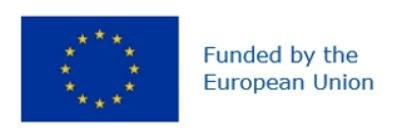Pieter Geiregat - NOMISS
NOMISS – Nanostructured Materials for Infrared Silicon Photonics
Description of the PI

Pieter Geiregat received his master’s degree summa cum laude in Engineering Physics from Ghent University in 2010. After this, he pursued a PhD degree jointly between TU Delft and Ghent University, which he defended in 2015 on the topic of integrated lasers based on solution processable nanoscale materials, so-called ‘quantum dots’. During his post-doctoral research period, he first worked on an ERC proof-of-concept grant, to continue as a post-doctoral fellow of the FWO and an associated fellow of Cornell University, USA. During this period, he also spent 6 months at Victoria University of Wellington (NZ) to learn about a variety of advanced ultrafast spectroscopy methods. At Cornell University in particular, he explored multi-dimensional femtosecond infrared spectroscopy to study nanomaterials with infrared optical transitions and their interplay with molecules bound to their surface. In 2018, he was appointed tenure track assistant professor at UGent in the Department of Chemistry. In 2020 he set up the NoLIMITS Center for Non-Linear Spectroscopy and Microscopy, an interdisciplinary cluster of research groups using pulsed lasers in fields as additive manufacturing, imaging and spectroscopy. He recently obtained a prestigious ERC Starting Grant on the topic of mid-infrared emitting nanomaterials and their use in small-footprint opto-electronic devices.
Project description
Living in the 21st century, it’s hard to imagine our lives without our portable opto-electronic devices such as smartphones, laptops, smartwatches and the likes. Based on the interaction of short wavelength radiation, i.e. visible light, with matter, these devices have impacted society profoundly and in unforeseen ways. Using longer wavelengths however, such as those found in the infrared spectrum spanning 1.5 μm – 5 μm, holds a massive potential already recognized in niche environments such as research labs, the military and space exploration. These fields use the infrared radiation routinely to quantify molecules in chemical sensors, tracking glucose in blood samples or greenhouse gases in the atmosphere, or study far-away galaxies through clouds of dust , akin to thermal night vision. Unfortunately, the devices used in these studies are very expensive, bulky and often composed of restricted chemical elements (Hg, Pb, …) leading to a massive untapped potential for infrared opto-electronics to impact European society. Within the ERC-STG project NOMISS, we will therefore explore a route towards low-cost, safe and flexible IR opto-electronics. We will do this by developing a new class of solution-processable semiconductors in the form of colloidal quantum dots based on non-restricted elements with efficient infrared light emission. After quantifying and optimizing their fundamental properties through ultrafast spectroscopy, we will incorporate these materials on small silicon photonic chips to realize small footprint and mass-deployable devices.
NOMISS – ERC STG , 60 months
Objectives (if applicable)
These are the objectives of NOMISS:
- To synthesize a library of non-restricted colloidal nanomaterials for mid-infrared light emission.
- To develop a full picture of electronic, vibrational and coupled degrees of freedom underlying the photo-physics of infrared nanomaterials.
- To implement infrared nanocrystals in integrated optical circuits in the mid-infrared range.
Role of the PI / Ghent University
Coordinator, single lead PI.
Website
www.nano.ugent.be
www.nolimits.ugent.be
Contact
Prof. dr. Ir. Pieter Geiregat
Department of Chemistry
Phone number: +32 9 264 44 36
E-mail
Funding info

Disclaimer
Funded by the European Union. Views and opinions expressed are however those of the author(s) only and do not necessarily reflect those of the European Union or the European Research Council Executive Agency (ERCEA). Neither the European Union nor the authority can be held responsible for them.